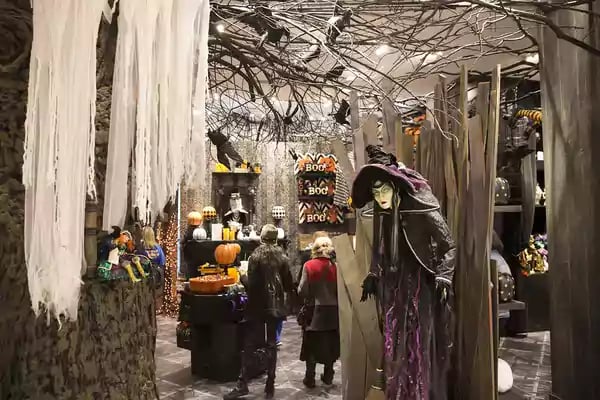Pop-up shops, for the most part, are exactly what their name implies. They are temporary shops, often put up overnight in a strategic location, and only destined to stay there for a short time.

You can think of individual proprietary shops, such as carts or marquees under which individuals sell things they make as pop-up stores, but today they’re a big brand phenomenon too. Surprisingly, however, they’re not strictly a product of today’s high-rent retail environment.
Back in 1885, a man named J.J. Haverty created what was essentially a pop-up shop in Atlanta to sell furniture. It eventually grew into an $820 million per year furniture empire, its long-outgrown original spot having been overtaken by a series of small businesses in the intervening decades. Pop-up shops can benefit retailer today for many reasons.
Why Brands Use Pop-Up Shops
Pop-up shops are great for introducing new or limited-edition products. Back in 2002, retailer Target created a pop-up shop in Rockefeller Center to promote new fashion lines. Google has created pop-up donut shops, not to promote donuts, but to draw people in and promote their internet-connected speakers. Haute couture brands regularly create pop-up shops in cities that host a Fashion Week to reach their core constituency.
Online brands use pop-up shops to “go offline” and reach out to consumers in a different way, and sometimes smaller brands will set up a pop-up shop in a new district to test the waters for possible expansion.
“Instagrammable Moments and First-Party Data”
Many brands—especially those that are “digital native” brands without brick-and-mortar stores—rely heavily on social media for brand promotion and advertising. Pop-up shops fit in nicely with the typical online marketing strategy. For one thing, they provide a nice backdrop for visitors to create their own social media content. In fact, pop-up shops are often particularly designed to be Instagram-friendly and encourage social sharing.

By offering a “touch and feel” experience for formerly online customers, pop-up shops generate two kinds of data. For consumers, they generate the “touch and feel” data that can turn casual shoppers into brand loyalists. For the brand itself, they create new kinds of data on who their target demographic is, and may offer insights into new audiences.
Tips for Doing Pop-Up Shops Successfully
Here are a few tips for doing pop-up shops successfully:
- Use pop-up shops to gather product preference, shopper, and location data
- Present products in person in ways that are engaging—particularly for stores that primarily operate online
- Use a pop-up shop to connect your brand to a local event or a major holiday
- Partner with other brands to double the impact of your pop-up shop
- Invite your best customers to a “VIP event” at your pop-up shop to show appreciation and cement their loyalty
- Use pop-up shops to inform consumers about facets of your business that are not as well-known
- Nonprofits can use pop-up shops to raise community awareness of issues or services
- Many brands benefit from creating limited edition products just for their pop-up shop
- Take a leaf from Google’s book and pair up an enticing food product with the product or service you’re promoting
Pop-up shops can be a powerful consumer marketing tactic, for brick-and-mortar retailers and online brands. They can add a pleasant diversion to the days of the people who frequent the area, offer great opportunities for user-created social media content, and allow brands to learn more about their customers and about potential permanent retail locations.
Doing pop-up shops well requires planning and hard work, but the ROI can be impressive and long-lasting. Hangar12 is at the forefront of CPG marketing strategy and more. Subscribe to our blog to stay up-to-date with our latest insights.